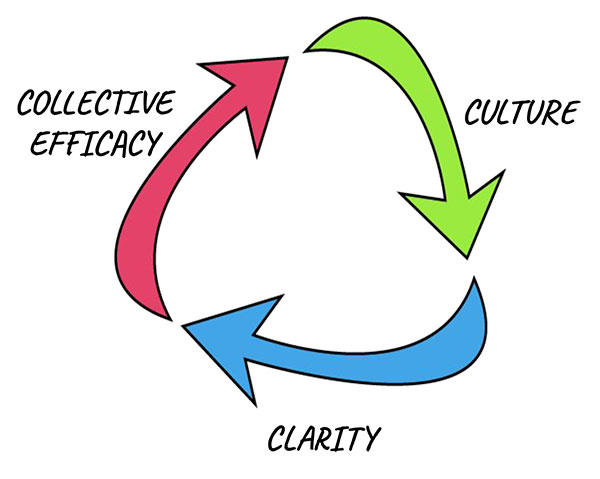
“Choose a job you love and you will never have to work a day in your life.” (Confucius)
Why Do Principals Need to Prioritize?
I have spent the past three decades learning everything I can about leadership and literacy in education. Research, practice, and ideas have changed and evolved, but certain elements remain: the heart of everything we do is the love of learning. While coaching school and district leaders in the past several years, I realized the strain on school principals to move beyond an administrator and instructional leader, keeping track of the pulse of culture, while ensuring that learning goals are met.
I reached out to several colleagues, beginning rich conversations about exciting new ways of viewing educational systems. A particularly resonant conversation was with my friend Tracy. We have worked together and stayed connected over the past decade and agree that a climate of high executions for learning needs to be well supported by fun! We also realized that if the leaders are not having fun, neither are the teachers and the students. So, we embarked on an intellectual quest of sorts: how can we live and work within chaos and find that love for learning that first inspired us?
The first part of this blog series will look at five areas behind analyzing and organizing priorities to focus passion and keep joy as the focal point. Then, we will move to interview leaders whose passion has kept their leadership fresh, inviting and effective.
Restoring an Enduring, Joyful, Learning Environment
by Bonnie D. Houck and Tracy Frederick Corcoran
“In today’s climate of heightened expectations, principals are in the hot seat to improve teaching and learning. They need to be educational visionaries; instructional and curriculum leaders; assessment experts; disciplinarians; community builders; public relations experts; budget analysts; facility managers; special program administrators; and expert overseers of legal, contractual, and policy mandates and initiatives. They are expected to broker the often-conflicting interests of parents, teachers, students, district officials, unions, and state and federal agencies, and they need to be sensitive to the widening range of student needs. Although that job description sounds overwhelming, at least it signals that the field has begun to give overdue recognition to the indispensable role of and mounting demands on principals.” (M. Christine DeVita, President, The Wallace Foundation, 2013)
In order to respond to this need to support our school leaders in managing the enormous tasks assigned to them, this blog series will unpack three essential “principal priorities” that can create a framework for decision making in the short term, but also have promise for lasting leadership.
Prioritizing in Chaotic Times?
During the past two years, the constant navigation of necessary changes due to the pandemic have required teachers and leaders to constantly pivot and regroup. We recognize that teachers have had a lot of “heavy lifting” in ensuring our students have access to inclusive learning opportunities both in schools and online. But, behind the scenes, principals and district leaders have had to make incredibly difficult and timely decisions with a historical or research based context. Principals have to be the face of the calm in the storm. But, behind the scenes, they have communicated the district decisions and taken the brunt of the frustration of teachers and the community.
What can principals do to stay emotionally healthy while doing the important job of managing an ongoing and changing crisis? What is essential?
What is Essential?
The Principal Priorities Framework
A framework is an essential, supporting structure that provides a solid foundation for sharpened decision-making that ensures alignment within and across schools as we rebuild. Our framework for principal priorities has three critical elements: culture, clarity, and collective efficacy. Each element has components for safe, healthy, and inclusive school environments, with intentional goals for all.

Culture: The culture of a school sets the foundation for teaching and learning. Researchers at Harvard Graduate School of Education (2018) found that a strong, cohesive culture relies upon collective knowledge of a school’s distinctive character and the collegial interactions that make that character thrive.
Next week, read Blog #2: “Creating an Inclusive Culture for All.”
Clarity: Organizational clarity ensures clear goals and expectations for staff, students, and the entire community, minimizing confusion and discord. Clarity and transparency is needed to alleviate the stress, anxiety and continuous change in the field of education, especially after the disruptions over the past few years.
The following week, read Blog #3: “Communicating for Clarity to Engage and Empower.”
Collective Efficacy: Collective efficacy is supported by the belief that leaders and teachers best impact the inclusive sense of belonging and continuous learning of students when they work as a team.
For week five, we’re featuring Blog #4: “Collective Efficacy and Action to Positively Influence Students and Learning.”
An Action Plan for Principal Priorities: Principles can use this framework to analyze their own strengths in planning and implementing these three foundational priorities.
Wrapping up this series, read Blog #5: “Creating Your Priority Action Plan.”
Author Bios
Bonnie D. Houck is an experienced teacher, administrator, consultant, coach, author, speaker, and trainer who specializes in literacy leadership development and positive school change. Bonnie has authored books, journal articles, blogs, and webinars focused on literacy and leadership.
Tracy Frederick Corcoran serves as the Director of Teaching and Learning for a Twin Cities area school district. Tracy is an experienced teacher, instructional coach, curriculum coordinator, and AVID District Director, who enjoys providing professional development across the country.